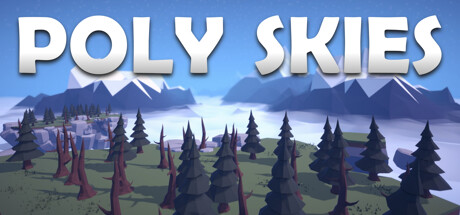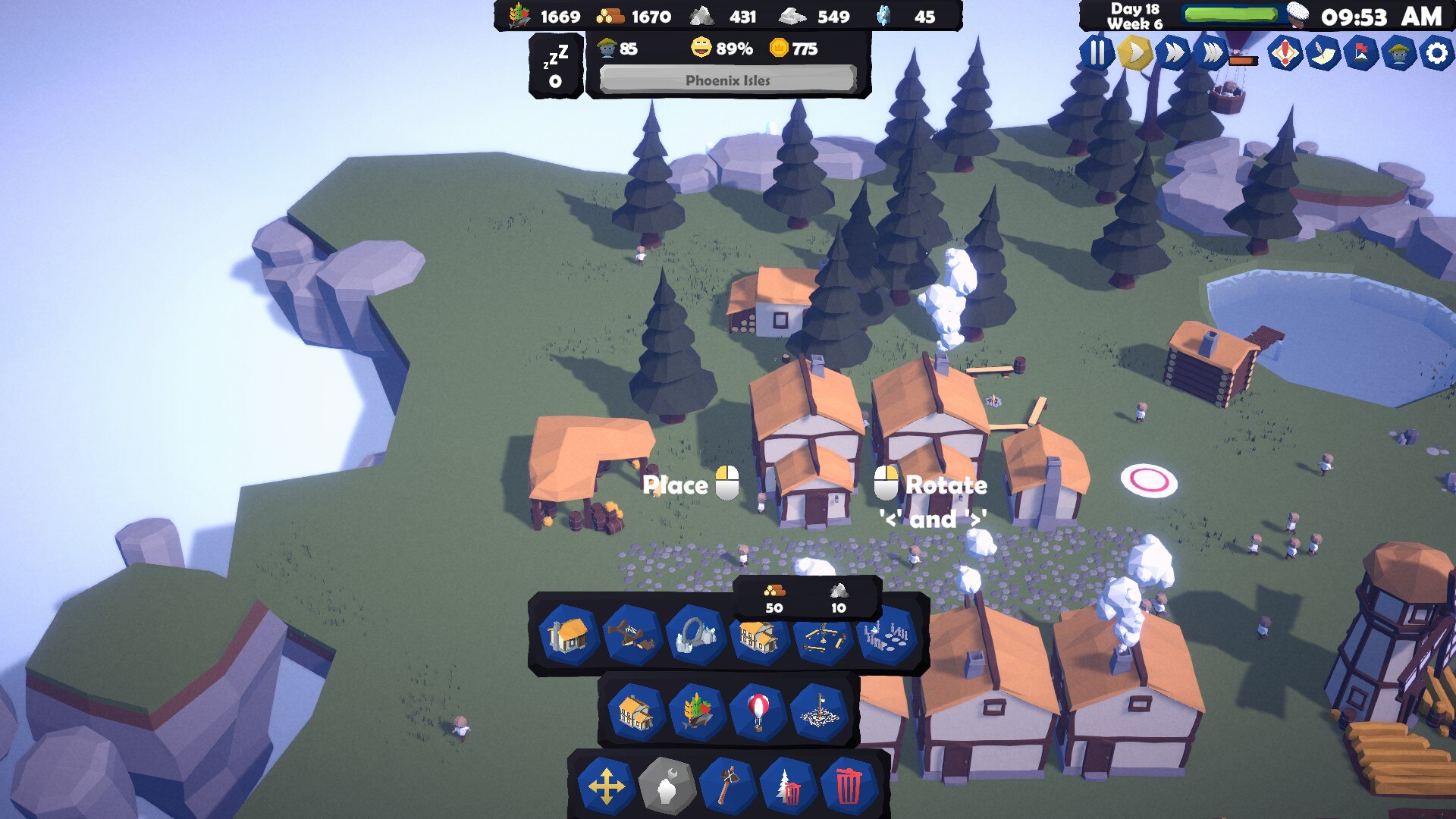
Poly Skies
Poly Skies is one of those games that can easily be overlooked, although I’d argue that it’s one of the most enjoyable ways to initiate players into the city builder genre. The game was designed with the goal of providing an easy and relaxing experience, and for that reason the mechanics are intentionally simplified. However, it can well appeal to more experienced players too, as a zen-like escapade from the micromanagement and over-optimization hell that even the blockbusters of the genre make one get used to.

Poly Skies is about creating little communities of people on floating islands. You build them houses, production buildings (arborist, mine, quarry, fishery), and fields to grow crops. You can expand to nearby islands by building portals for people to travel between, and each new island can thus become a cradle for a new village. At the end of each week, an airship arrives at your main island, and you can exchange the resources gathered for gold or new villagers. Later on, enemies will occasionally attack your houses if there is no defense building in their proximity. In a nutshell, Poly Skies does what you’d expect a city builder to do, but on a much, much smaller scale.

For example, there are only 2 types of living quarters, 3 types of crops and only 1 type from each of the other production buildings. There is no production chain involved, and the production buildings have no customization options apart from the amount of people you want to allocate to them. Even though each villager has different values for their skills, there’s currently no way to choose which of them you want to work in a certain place – the game designates them automatically and the workplace will automatically raise the employees’ corresponding work skill (if one works at the fishery, their fishing skill will be improved). The buildings can be freely moved without any loss of materials, and without having to wait for them to be demolished. Demolishing a building is also instant, and you will get back all the materials you spent on building it. The islands you colonize will all contribute their resources to a global treasury, and the villagers will move freely between them to reach their homes and workplaces as long as there is a portal that they can use.

The economy doesn’t require any kind of optimization: there are plenty of resources, and they pile up very easily because the population consumes little amount of food compared to what you produce, and the buildings are overall very cheap to build. Thus the progression of the game is quite fast and dare I say effortless, allowing you to freely expand as you desire. There is a happiness system in place, but like pretty much all other mechanics of the game, it’s overly-simplified and very transparent (the exact parameters that influence this mechanic are unclear): during the day, the happiness decreases as people go to work, and at night it goes back up as long as they have enough food and some relaxation buildings accessible (campfire and a later-unlocked shrine).

The game doesn’t have a tutorial, but it does have a quest sequence that guides you tightly though all the mechanics and teaches you how to play the game. In the beginning of the game, it’s advisable to follow them closely because even if you build things ahead of time, you’ll have to build them again when the quest requires you to do so (a quest that asks you to place a certain building will not autocomplete if you already placed that building before you received the quest). Aside from these quests, there are some lore fragments that you automatically collect by colonizing new islands, and gathering all five of them will award you an achievement.

However, as smooth as Poly Skies’ gameplay is, the game could use a few quality-of-life improvements. For one, there’s no autosave – if the game crashes, you lose all your progression (it does have a manual save though). Secondly, the UI is lacking the display of some stats: you can see how many villagers you have, but you can’t see how many free housing spots you have; you can see the amount of resources in storage, but you can’t see the amount you produce on a daily basis, from each type of resource; you can see the overall happiness score, but the happiness buildings don’t indicate how much they will increase it when built. Thirdly, there’s no way to quickly cycle through the inhabited islands – even if they’re easy to find since they’re close to each other, when you start expanding your empire and colonize many of them, it can become tedious to always scroll the map to find a specific island you’re looking for, even more so when you have your buildings under attack. And lastly, there are no notifications about new quests or new lore fragments collected – these are hidden under some panels that are always collapsed by default (and return to a collapsed state every time you press ESC to exit the building view) – this would all be fine for the purpose of keeping the game HUD uncluttered, if only there was a visual hint for the player to know when a quest is new or completed (the audio clue does not suffice). A lot of these issues will be addressed and implemented in future updates.

Poly Skies is a very short game that can be finished in 2-3h if one limits themselves solely to obtaining all the achievements – which by the way, unlock naturally as you play and as you expand to having at least five islands populated. The game can surely be played for much longer than that, if one wants to. It also offers a creative mode in which all the buildings are unlocked from the start, but the achievements are disabled.
Poly Skies doesn’t bring anything revolutionary to the genre, but I love it for its simplicity and for how easy it is to handle. It does have its flaws, but they’re rather minor in comparison to the deeply enjoyable and recreational experience that it provided overall.
Disclaimer: This review is based on a press preview copy of the game, kindly provided by Red Phoenix Studios via The Indie Game Collective.